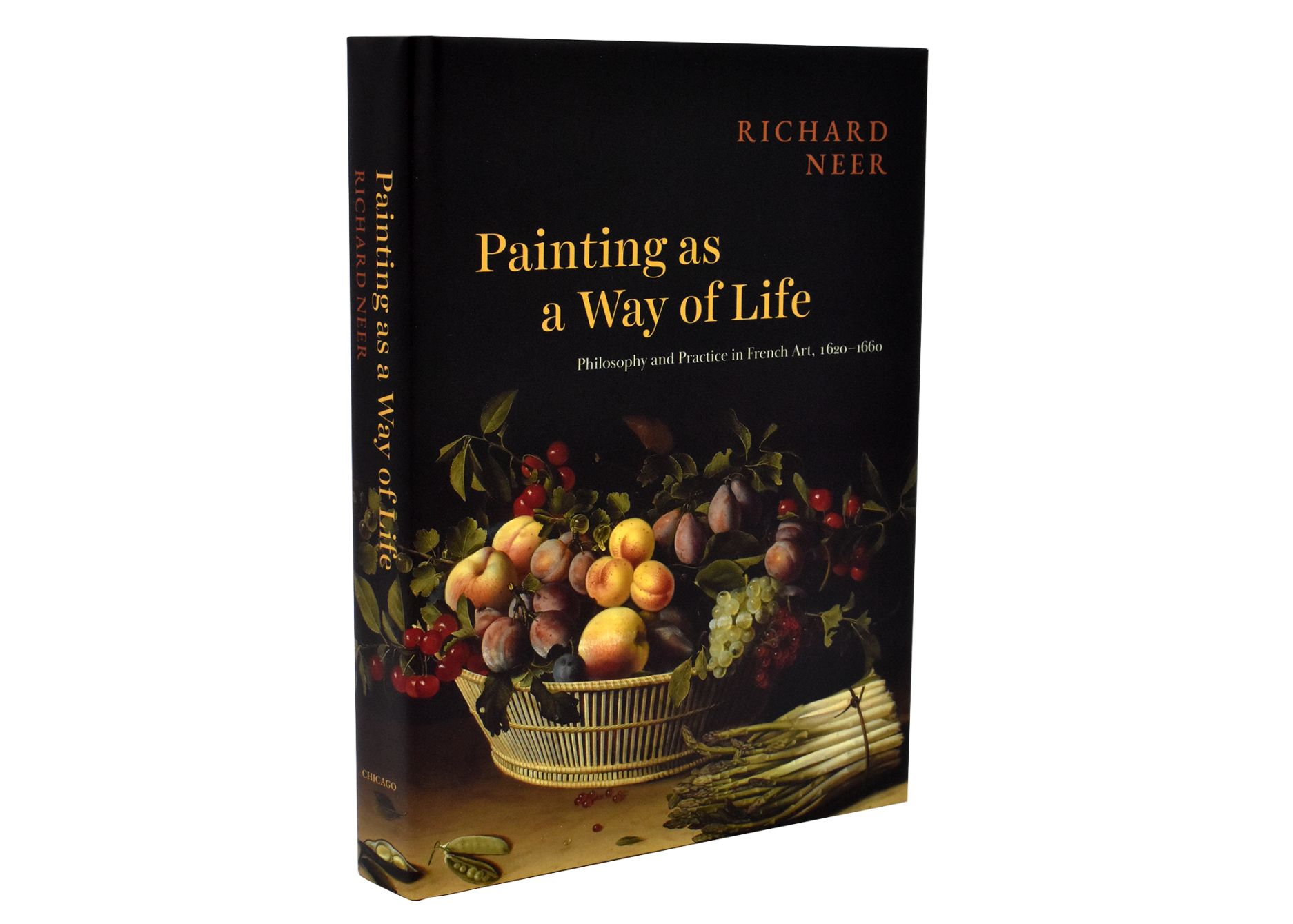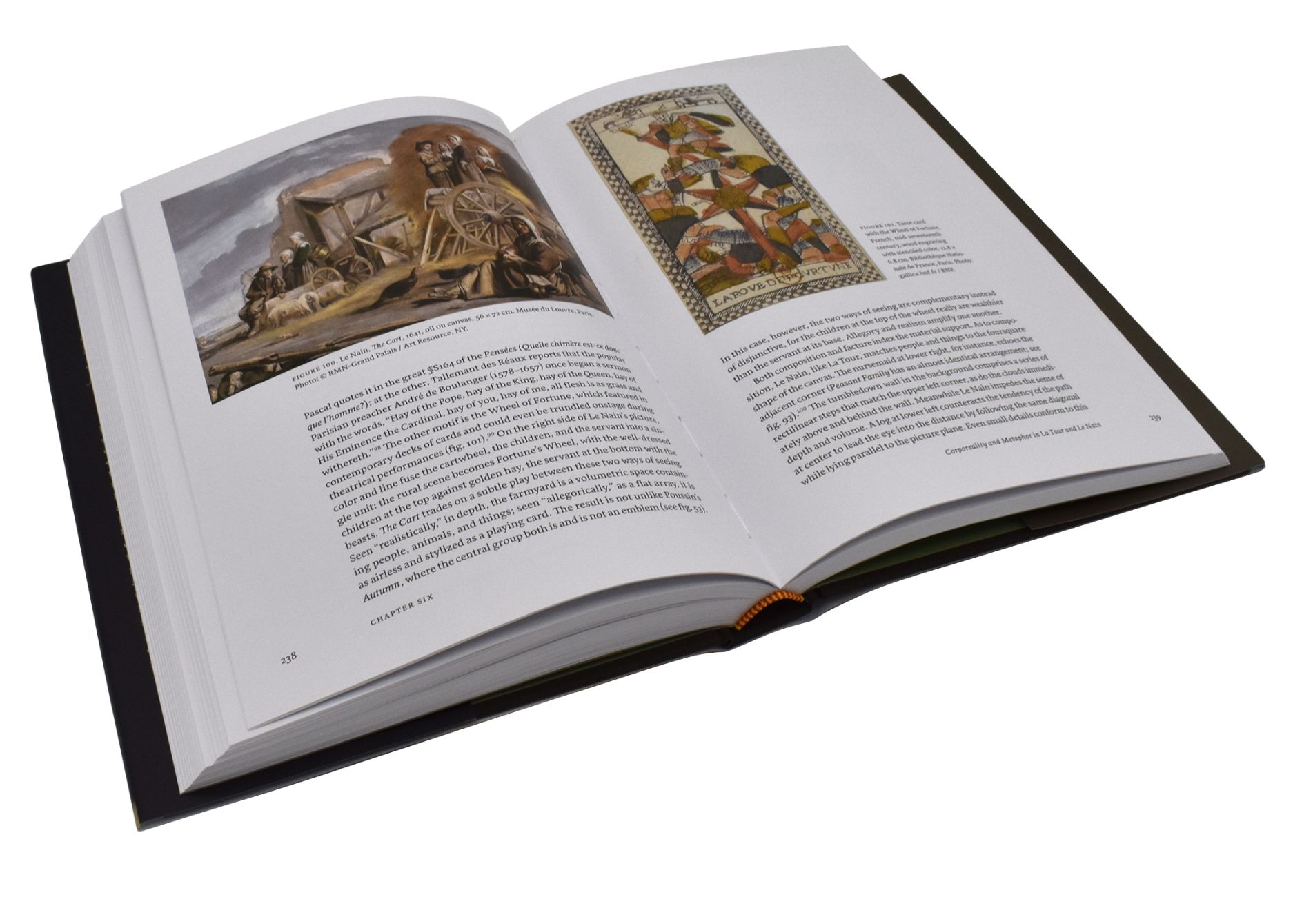Painting as a Way of Life
Philosophy and Practice in French Art, 1620–1660
9780226835495
9780226835501
Painting as a Way of Life
Philosophy and Practice in French Art, 1620–1660
Neer uncovers a key moment in the history of early modern art, when painting was understood to be a tool for self-transformation and for living a philosophical life.
In this wide-ranging study, Richard Neer shows how French painters of the seventeenth century developed radically new ways to connect art, perception, and ethics. Cutting across traditional boundaries of classicism and realism, Neer addresses four case studies: Nicolas Poussin, renowned for marrying ancient philosophy and narrative painting; Louise Moillon, who pioneered French still life in the 1630s; Georges de La Tour, a painter of intense and introspective nocturnes; and the Brothers Le Nain, specialists in genre and portraiture who inspired Courbet, Manet, and other painters of modern life. Setting these artists in dialogue with Montaigne, Descartes, Pascal, and others, ranging from the studios of Rome to the streets of Paris, this book provides fresh accounts of essential artworks—some well-known, others neglected—and new ways to approach the relation of art, theory, and daily life.
In this wide-ranging study, Richard Neer shows how French painters of the seventeenth century developed radically new ways to connect art, perception, and ethics. Cutting across traditional boundaries of classicism and realism, Neer addresses four case studies: Nicolas Poussin, renowned for marrying ancient philosophy and narrative painting; Louise Moillon, who pioneered French still life in the 1630s; Georges de La Tour, a painter of intense and introspective nocturnes; and the Brothers Le Nain, specialists in genre and portraiture who inspired Courbet, Manet, and other painters of modern life. Setting these artists in dialogue with Montaigne, Descartes, Pascal, and others, ranging from the studios of Rome to the streets of Paris, this book provides fresh accounts of essential artworks—some well-known, others neglected—and new ways to approach the relation of art, theory, and daily life.
352 pages | 104 color plates, 2 line drawings | 7 x 10 | © 2025
Reviews
Table of Contents
Acknowledgments
Introduction. Before Theory: Painting and Philosophical Practice
Part I: Poussin’s Classicism
Chapter One. Poussin’s Self-Portraits and the Dream of Classical Theory
Chapter Two. Poussin’s Philosophy
Chapter Three. Poussin’s Practice
Chapter Four. Landscape and Disproportion
Part II: Realism, Acuity, and Metaphor
Chapter Five. Discerning Eyes: Louise Moillon, Still-Life, and Genre
Chapter Six. Corporeality and Metaphor in La Tour and Le Nain
Coda
Notes
Bibliography
Index
Introduction. Before Theory: Painting and Philosophical Practice
Part I: Poussin’s Classicism
Chapter One. Poussin’s Self-Portraits and the Dream of Classical Theory
Chapter Two. Poussin’s Philosophy
Chapter Three. Poussin’s Practice
Chapter Four. Landscape and Disproportion
Part II: Realism, Acuity, and Metaphor
Chapter Five. Discerning Eyes: Louise Moillon, Still-Life, and Genre
Chapter Six. Corporeality and Metaphor in La Tour and Le Nain
Coda
Notes
Bibliography
Index




